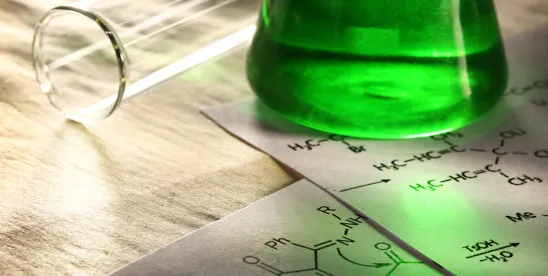On July 8, 2025, the European Commission (EC) presented a package of different measures which impact the EU Chemicals industry. This package was previously referred to by the Commission as a ‘Chemicals Industry Package’ and it was originally scheduled to be announced at the end of this year. The earlier publication is partly due to the pressure by stakeholders, including the European Parliament. On the other hand, it has been confirmed that the REACH revision proposal is still scheduled for Q4 2025.
The package includes:
- A Communication from the Commission regarding the European Chemicals Industry Action Plan [1];
- A Sixth Omnibus simplification including i) a proposal for a Regulation amending the recent CLP amendment (Regulation (EU) 2024/2865) as regards dates of application and transitional provisions; ii) a proposal for a Regulation amending the CLP Regulation, Cosmetics Regulation and Fertilizers Regulation as regards simplification of certain requirements and procedures for chemical products [2];
- A proposal of a Regulation on the European Chemicals Agency [3].
A breakdown of the key changes and relevant information from the package is presented below.
1) The Action Plan for the Chemicals Industry
The Action Plan for the Chemicals Industry is aimed at strengthening the sector’s competitiveness, advancing sustainability, and supporting its modernisation.
The key actions for the European Commission include:
- Establishing a Critical Chemicals Alliance by the end of 2025 to coordinate efforts with Member States and industry stakeholders in safeguarding the EU’s chemical production capacity and addressing key trade challenges.
- Enhancing international cooperation to secure market access by pursuing sectoral agreements where free trade deals are not feasible. It will strengthen import surveillance of chemicals through the Import Surveillance Task Force by Q3 2025.
- By Q4 2025, it will also support the creation of harmonised, risk-based controls to ensure imported chemicals comply with EU regulations. Additionally, the Commission will coordinate an enforcement and market surveillance package, integrating REACH into the EU Single Window Environment for Customs [4] and aligning it with broader Customs Union reforms.
- Taking measures by the end of 2025 to support the decarbonisation of the chemical sector. It will update the State aid guidelines for Emission Trade System (ETS) indirect cost compensation to potentially include a broader range of chemicals. It also plans to address environmental permitting challenges, including those affecting decarbonisation projects, through an environmental omnibus proposal.
- Propose a Circular Economy Act to unlock secondary materials markets and drive circularity in the chemicals (2026).
- Launched a public consultation [5] on new rules to track the recycled content in single-use plastic bottles under the Single-Use Plastic Directive, including chemically recycled content, and adopt the resulting implementing act in Q4 2025.
- Assess the feasibility to take into account emissions from non-permanent Carbon Capture Unit (CCU) products downstream as part of the ETS review (Q2/Q3 2026).
- Develop financial incentives to promote the uptake of non-fossil carbon as well as renewable and low-carbon hydrogen.
- Improve the regulatory framework for carbon capture, transportation, utilisation and storage (CCUS), including by proposing a regulatory framework for developing an EU CO2 market and infrastructure.
- Propose an Advanced Materials Act to stimulate and reward innovation in the chemical sector (Q4 2026).
- Roll out a Common Data Platform for Chemicals as set out under the One Substance, One Assessment package.
- Present a roadmap for phasing out animal testing (Q1 2026).
- Adopt a proposal for a targeted revision of REACH (Q4 2025).
- Adopt a simplification omnibus on plant protection products and accelerate market access for biopesticides (Q4 2025).
- On PFAS, the Action plan provides that the ongoing work of ECHA’s committees is expected to conclude in 2026. Consumer uses of PFAS, such as in cosmetics, food packaging, and outdoor gear, may be banned, while limited industrial use could be permitted under strict conditions for critical sectors like health and defence.
2) Simplification of Certain Requirements and Procedures for Chemical Products (Sixth Omnibus Regulation)
The “sixth simplification omnibus” includes two sets of proposals which, according to the EC, are estimated to save the industry at least €363 million annually.
The first one is the proposal for a Regulation amending the recent CLP amendment (by Regulation (EU) 2024/2865) as regards dates of application and transitional provisions. It seeks to delay the implementation dates for mandatory formatting rules, regulations on advertising and distance selling, the six-month label update deadlines, and fuel pump labelling requirements.
The second proposal focuses on simplifying the requirements and procedures related to chemical products. It involves amendments to several regulations, including Regulation (EC) No 1272/2008 on Classification, Labelling and Packaging (CLP), the Fertilising Product Regulation (EU) 2019/1009, and the Cosmetics Product Regulation (EC) No 1223/2009.
On CLP, this proposal targets labelling rules, advertising, and distance sale offers. For example, Article 29 as amended, provides that the general labelling rules in Article 17.1 may now be reduced in accordance with the rules set forth in section 1.5.2 of Annex I, while the previous version first mentioned compliance with Article 29.1. The obligation regarding keeping up to date information on labels (Article 30) is also amended in order to add that such information shall be kept up to date without undue delay “after the results of the new evaluation referred to in Article 15(4) are obtained by, or communicated to, that supplier.” The proposal also adds the definition of “digital contact” (Article 2.42) meaning any up-to-date communication online channel through which a supplier can be reached, and this digital contact information would replace the “address and telephone number of the supplier” as part of the mandatory information to include in the content of the label of a substance or mixture classified as hazardous. On advertisement rules, the proposal includes that any advertisement to the general public for a substance/mixture classified as hazardous and containing substances in Part 2 of Annex II shall include the sentence “Always read the label and product information before use.”
On the Cosmetics Regulation, the proposal introduces a streamlined process for adding new colorants, preservatives, and UV filters to relevant annexes, speeding up the approval of new ingredients in a new Article 14(a). The amended Article 15 of the Cosmetics Regulation introduces a clearer and more structured derogation process for the use of CMR substances classified as category 1A or 1B. Notably, it removes the requirement for compliance with food safety legislation and instead mandates that derogation requests be submitted within three months of the substance’s classification under the CLP Regulation. It also provides a detailed definition of what constitutes a “suitable alternative,” based on risk reduction, functional equivalence, feasibility, and market availability. New exemptions are introduced for substances classified as CMRs solely via oral or inhalation routes, and for certain non-chemically modified plant extracts, with SCCS safety evaluations required where relevant. Additionally, transitional measures allow affected cosmetic products to remain on the market for up to 24 months after regulatory amendments, ensuring smoother adaptation for industry. Additionally, the proposal removes the extra pre-notification requirement for products containing nanomaterials.
On the Fertilizing Products Regulation, the proposal aims to simplify compliance and reduce regulatory burdens by removing the requirement of having the fertiliser registered according to the REACH Regulation (Regulation No 1907/2006). The proposal adds further amendments in order to provide information in the form of digital contact. Additionally, it proposes removing the clause that currently requires separate delegated acts for each component material category, streamlining future updates. The EC also published a document including Questions and Answers on the Action Plan and the Simplification Omnibus [6].
3) Proposal on a Self-Standing European Chemicals Agency (ECHA) Regulation
The proposed ECHA basic regulation aims to establish a standalone legal framework for ECHA to manage its expanding responsibilities more effectively, for example under the OSOA Package. These responsibilities now extend beyond REACH to cover new tasks in areas such as biocides (e.g., contribution of SEAC Committee to the work of the BPC on the assessment of active substance), classification and labelling (e.g., assessing dossiers for harmonised classification prepared on behalf of the Commission), drinking water (e.g. establishing and maintaining the four EU positive lists for authorized substances in contact with drinking water), the PPWR (e.g., assessing restrictions of substances in packaging using REACH restriction process), and batteries (e.g., assessing the restrictions of hazardous substances in batteries), among others. In addition, the proposed regulation seeks to strengthen ECHA’s governance and responsiveness and introduces a simplified financing model. Finally, the proposal introduces changes to the current organization of the ECHA Committees and the Scientific Committee on Consumer Safety (SCCS) in order to expand their responsibilities and provide for better coordination of their work. Thus, it seems that SCCS will remain operational.
Our Take
The proposed amendments of the CLP Regulation and of the Cosmetic and Fertilizer Regulations include specific simplification measures to reduce compliance and administrative burden. So, there is some hope that the upcoming REACH revision (the proposal being announced for the end of 2025) will go in a similar direction (although the recent communication from the EC have been mixed). For example, uncertainty pertains with regard to future REACH registration of polymers. We will continue monitoring these developments.
[1] Available online at https://single-market-economy.ec.europa.eu/publications/european-chemicals-industry-action-plan_en
[2] Available online at: https://single-market-economy.ec.europa.eu/publications/simplification-certain-requirements-and-procedures-chemical-products_en
[3] Available online at: https://single-market-economy.ec.europa.eu/publications/proposal-regulation-european-chemicals-agency_en
[4] The EU Single Window Environment for Customs is the system established by Regulation (EU) 2022/2399 establishing the European Union Single Window Environment for Customs, which provides a centralised system to interconnect the import, export, and transit systems of the Member States with Union non-customs systems.
[5] Consultation to lay down the rules for the application of Directive 2019/904 as regards the calculation, verification, and reporting of data on recycled plastic content in single-use plastic beverage bottles. The period to submit feedback is open from 8 July until 19 August 2025. Please find the consultation available at: https://ec.europa.eu/info/law/better-regulation/have-your-say/initiatives/13467-Single-use-plastic-beverage-bottles-EU-rules-for-calculating-verifying-and-reporting-on-recycled-plastic-content_en
[6] Available online at: https://ec.europa.eu/commission/presscorner/detail/en/qanda_25_1759





 />i
/>i

